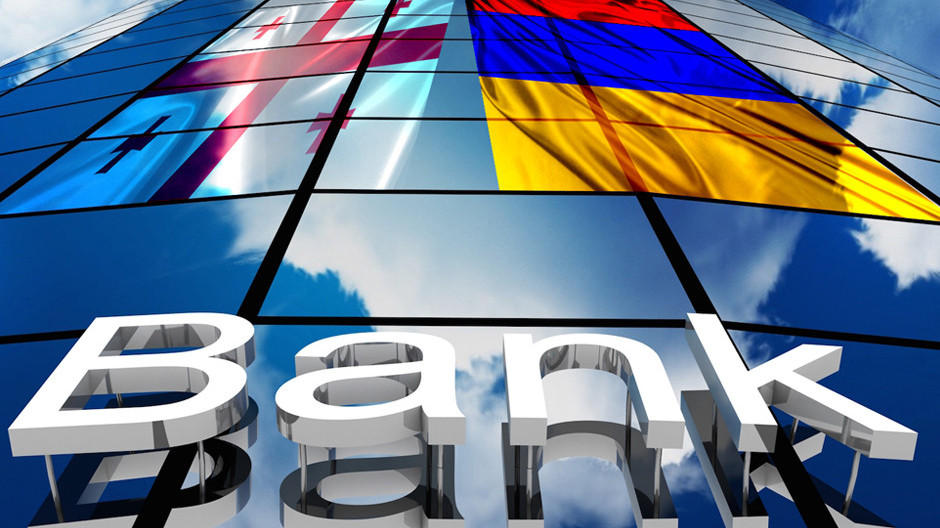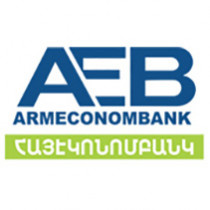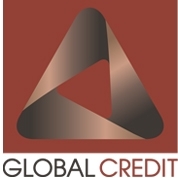Banks: Armenia vs Georgia
12.05.2017 | 09:56
Home /
News /
Articles /


Image by: Mediamax


Banks.am, with the support of Avtandil Gogoli, the founder of “Capital Locus”, presents comparative analyses of banking sectors of Armenia and Georgia.
Similarities
Banks - the advanced sector of economy
Both in Armenia and Georgia the banking sectors are relatively more advanced in terms of practiced corporate governance standards, transparency, regulation and integrity relative to other sectors such as energy, agriculture, tourism, etc. Key role in this achievement was played by international institutions which, backed by the political will of the countries, helped to develop solid standards of banking, its regulation and supervision.
There is still a lot to be done and improved, but let us not forget to value what we have: reputable and thoroughly regulated, mostly transparent banking sector without any major drawbacks during the last twenty years.
Substantial growth potential
Loan Portfolio to GDP ratio both in Armenia and Georgia is not more than 50%. Relative size of banking sector to GDP is quite low compared to developed countries.
At the same time, GDP per capita is also quite low: USD 3 850 in Georgia and USD 3 530 in Armenia by the end of 2016. If our economies grow at least by 7% per year, that is about three times faster than we grow now, then it will take Armenia and Georgia roughly 20 years to reach the current GDP per capita level of post-Soviet Latvia. Here are the two messages: first, how much more we have to work in Armenia and Georgia to escape economic backwardness and second, how much growth potential should be utilized (usual benefit of backwardness).
Thus, Armenian and Georgian banking sectors have potential to grow and increase their loan portfolio contributions to GDP plus utilize growth potential coming from increasing GDP.
Similar challenges
There are two main challenges that Armenian and Georgian banks are and will be facing. The first one is the regulation: Basel III will make the live of commercial banks even more difficult in terms of additional capital adequacy requirements (we don’t mean minimum regulatory capital requirement), stricter risk management policies, a need for additional internal bureaucracy and pressure on margins.
The second challenge is the technology: so called Fintech companies take quite a lot of profitable business lines out from commercial banks. Today one can make payments, money transfers, lending and currency exchange operations without commercial banks. Flexible and smart Fintech companies, out of regulatory radar, are increasingly efficient and successful in these businesses plus a lot of investment and talent is pouring in. Commercial banks pay and will pay the bill for it.
If we talk about short-term and operational challenges, the bankers both in Georgia and Armenia will be still busy with non-performing loans for quite some time.
Lack of presence in the other country
None of the Armenian banks are present in Georgian market and visa-versa, none of Georgian banks are present in Armenian market.
Roughly seven years ago HSBC Georgia was opened which, basically, was an affiliate of HSBC Armenia. In one and a half years after its opening HSBC Georgia was closed mainly because of tough competitive environment. From that point on Armenian banks became overly cautious in entering Georgian market.
At the same time one of the banks with international equity, Procredit Bank, was operating in both Armenia and Georgia, now it operates only in Georgia (in Armenia Inecobank purchased Procredit Bank Armenia). Russian Financial group VTB is present in both countries, and, Finca is present in Georgia as a bank and in Armenia as a UCO.
Capital Locus is making good progress in bringing one of the Georgian financial groups in Armenia. Initially they will be minority shareholders in one of the existing commercial banks. This financial group has a capacity and proven track record of being game changer. Having in mind the minimum capital requirement for commercial banks and foreign bank branches in Armenia is quite high – USD 62 Mill –the most efficient way to bring new investor in banking sector is via an existing bank.
By the way, recently Bank Mellat in Armenia announced the opening of a subsidiary bank in Tbilisi in September.
Differences
Organic vs. non-organic growth and concentration
In last decade or so Armenian banks were more keen to organic growth i.e. growth without mergers and acquisitions. We did have couple of merger-acquisition transactions between commercial banks in 2016 which were driven by increase of minimum capital requirements and also some loan portfolio purchase transactions from UCOs, however the scope of those transactions were rather limited.
In same period Georgian banking sector was characterized by more non-organic growth i.e. by means of acquisition of other commercial banks or purchase of loan portfolio from other commercial banks and credit organizations. Non organic growth in Georgia was mainly driven by two commercial banks which led to relatively high level concentration: two largest Georgian banks make close to 70% of total assets of entire banking sector. These two commercial banks can be considered as “too big to fail” i.e. hypothetically if these banks will have e.g. liquidity or solvency problems, the regulator and the government have to intervene and prevent them from collapse because their failure would have a severe impact on entire banking sector of the country as well as on economic and political stability.
For comparison, concentration level in Armenian banking sector is much lower: top 9 banks make 70% of total assets.
Capital requirements and presence of international capital
Till 2016 the minimum regulatory capital requirement for Armenian commercial banks and foreign bank branches operating in Armenia was USD 10m which was increased to USD 62m from 2017.
In Georgia minimum regulatory capital requirement is now around USD 20m starting from May 2017; before it was USD 5m. Existing banks must comply with this requirement gradually in three stages: USD 12,5m till the end of 2017; USD 16m till the end of June 2018 and USD 20m. till the end of 2018. Those legal entities who are seeking new banking license have to ensure USD 20m minimum regulatory capital very from the beginning.
There is still significant difference in minimum capital requirements; if we would compare capital adequacy norms, risk management requirements and other regulatory aspects –you will not observe such significant differences.
Despite of different capital requirements the number of commercial banks are the same: 17 in each country; recently one of the credit organizations in Georgia received a banking license and was transformed into 17th commercial bank.
There are some differences in terms of the presence of foreign investors as well. For example, investors from Middle East, like Lebanon, and from Russia have stronger presence in Armenia. In Georgia there are two banks listed on prime list of international stock exchange, banks with German, French, Turkish and Chinese investors as well.
Regulators reactions towards economic shocks
Depreciation of Georgian Lari and Armenian Dram starting from November-December 2014 might best illustrate differences in reactions.
As soon as Dram started to depreciate in November-December 2014, the Central Bank of Armenia) significantly increased reservation requirements for commercial banks on foreign currency denominated deposits which is done in AMD; by this decision CBA effectively created scarcity, an artificial one, of AMD and aggressively sold USD from its foreign currency reserves on exchange market.
As a result, Dram depreciated only by around 20%, minimum compared to other currencies in the region, and helped to mitigate social risks. The price was economic slowdown, reduced foreign currency reserves (bellow three months of import levels which is basically a red line) and negatively affected exports which could not take advantage from further depreciating AMD.
November-December 2014 Georgian Lari also started to depreciate and by its lower pick dropped by almost 60% towards US Dollar. It put a lot of social and political pressure on Government of the country and on National Bank of Georgia which was expected to intervene and stop depreciation of Lari by means of selling USD from foreign currency reserves. However, National Bank did not intervene. Arguments were following: exchange rate is floating, it shell be defined by the market and stability of exchange rate is not the function and responsibility of NBG.
As a result, economic activity continued to be relatively high; exporters benefited from local currency depreciation; foreign currency reserves were not exhausted and maintained on relatively high level. Who paid a bill: individuals and companies with USD dominated loans i.e. broader society.
These steps of Central banks of the two countries cannot be clearly defined as right or wrong: it is more an issue of differences in perspectives, social and political expectations.
***
“So the banking sectors of Armenia and Georgia have similarities as well as differences. We hope, that there will be further positive developments in banking sectors of both countries”, says founder of “Capital Locus” Avtandil Gogoli.
In the table below Armenian and Georgian commercial banks are presented by the amounts of their assets by descending order.
The indicators for Armenian commercial banks are provided as of 31/03/2017 and are taken from the respective analyses of Banks.am. The indicators for Georgian commercial banks are as of 30/09/2016 and are taken from the published report of KPMG international company.

Siranush Simonyan talked to Avtandil Gogoli






















Կարծիքներ
Հարգելի այցելուներ, այստեղ դուք կարող եք տեղադրել ձեր կարծիքը տվյալ նյութի վերաբերյալ` օգտագործելուվ Facebook-ի ձեր account-ը: Խնդրում ենք լինել կոռեկտ եւ հետեւել մեր պարզ կանոներին. արգելվում է տեղադրել թեմային չվերաբերող մեկնաբանություններ, գովազդային նյութեր, վիրավորանքներ եւ հայհոյանքներ: Խմբագրությունն իրավունք է վերապահում ջնջել մեկնաբանությունները` նշված կանոնները խախտելու դեպքում: